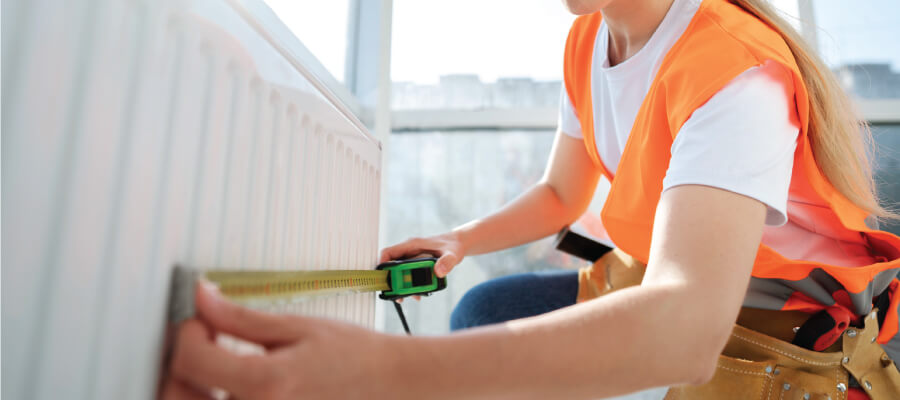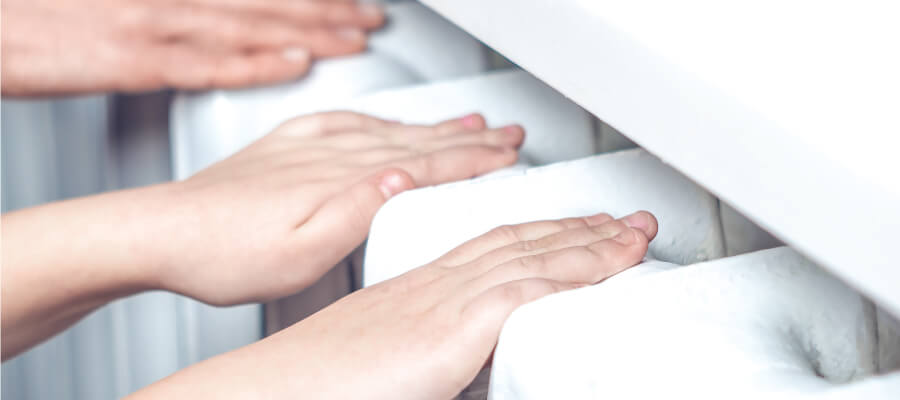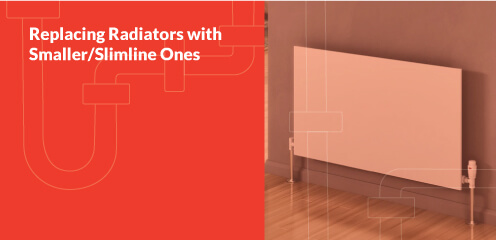Replacing Radiators with Larger Ones
There are a few reasons why you might look to replace your radiators. Perhaps you’re looking to upgrade to modern radiators, or you’re interested in designer radiators. Alternatively, you might be looking for larger radiators, increasing the overall heat output into your house.
In this blog post, we’ll look at how much difference larger radiators make, as well as the process and benefits of making this change.
Can you replace a radiator with a bigger one?

Yes, in most cases, you can replace a radiator with a bigger one. Whether it’s to increase heating efficiency in a room, or to better match the aesthetics of your space, it’s generally possible to do.
However, before you make this decision, you need to consider:
For support with all your plumbing and heating needs, including radiator upgrades or replacements, contact the team at Lacey Plumbing.
Does a larger radiator make a difference?

A larger radiator can make a significant difference to heating efficiency and heat output. The increased surface area you gain from replacing a small radiator with a large one means it can distribute heat more effectively and evenly, with a lower internal water temperature.
This may even improve the efficiency of your condensing boiler, saving you energy and money in the long term. Equally, the lower flow temperatures larger radiators are able to operate at means you’re covered if you decide to use a heat pump in the future.
Before upgrading to a larger radiator, you should consider the size of your room, and decide whether you actually need to make this upgrade in terms of efficiency and effectiveness.
The process of replacing a radiator with a larger one
To replace a radiator with a larger one, you need to turn off your heating system, drain it fully and prepare your new radiator before installing and bleeding the larger replacement:
Remember, if you need to consider pipework alterations, or you’re at all uncomfortable with managing this process yourself, consult central heating experts.
The benefits of upgrading to a larger radiator
If done correctly, upgrading to a larger radiator comes with a number of benefits:
Remember, you’ll only see these benefits if your larger radiators are installed properly by professionals, or somebody properly experienced with heating installations. Otherwise, you risk actually damaging your heating system and costing yourself money.
Book a Radiator Installation or Upgrade
Larger radiator options
Remember, to avoid damaging your central heating system, costing you more money and time, consider calling the pros to replace your radiators with larger ones.
More like this

Replacing Radiators with Smaller/Slimline Ones

Radiator Positioning: Should you Move When you Upgrade?
Find Us On
Unit 11 Eton Business Park
Eton Hill Road, Radcliffe, M26 2ZS
Opening Times
Mon – Fri 8am – 5pm
Call Us Today
0161 884 1109
GET IN TOUCH

